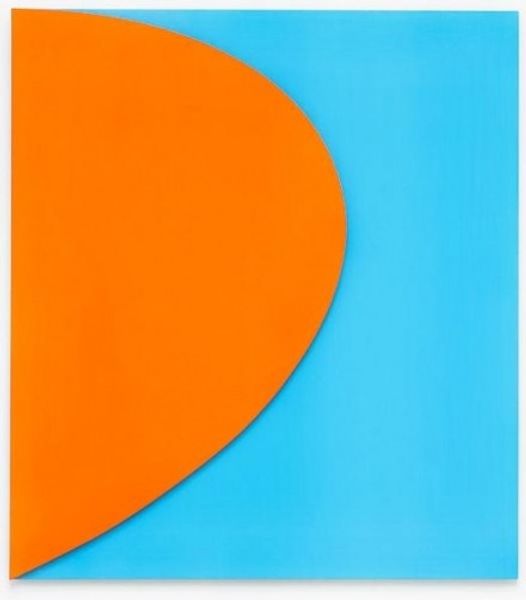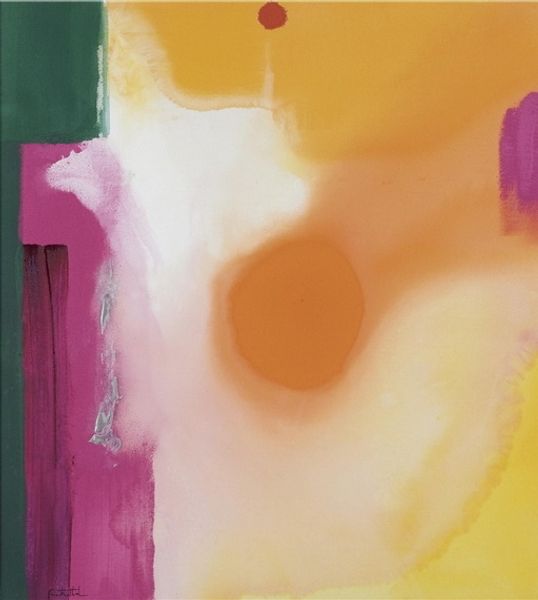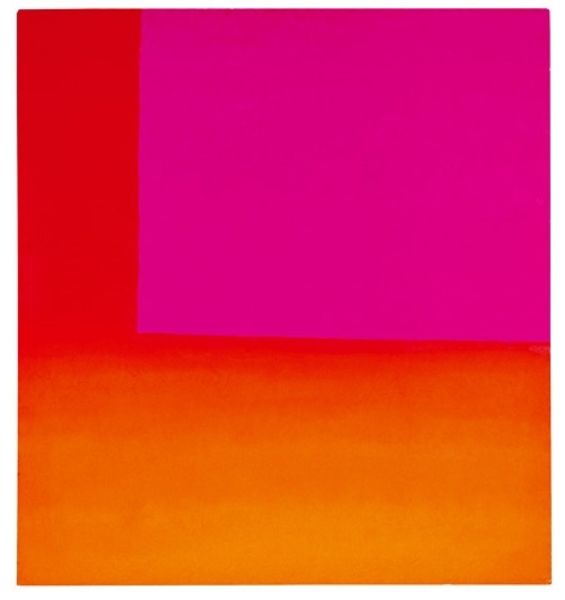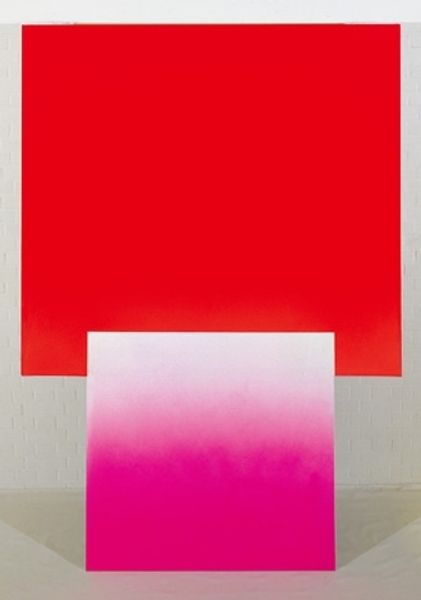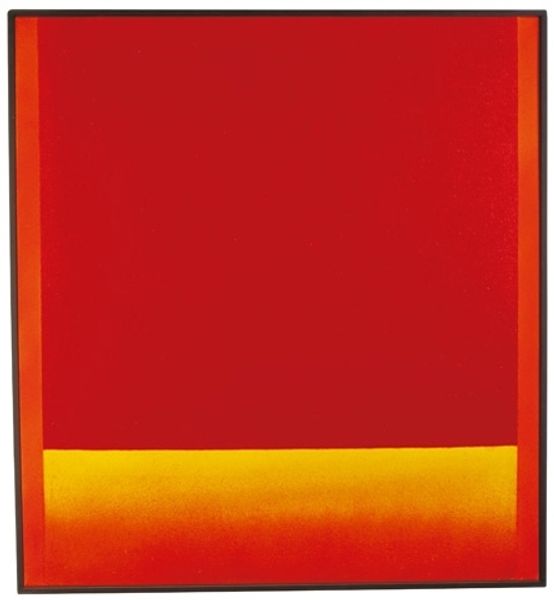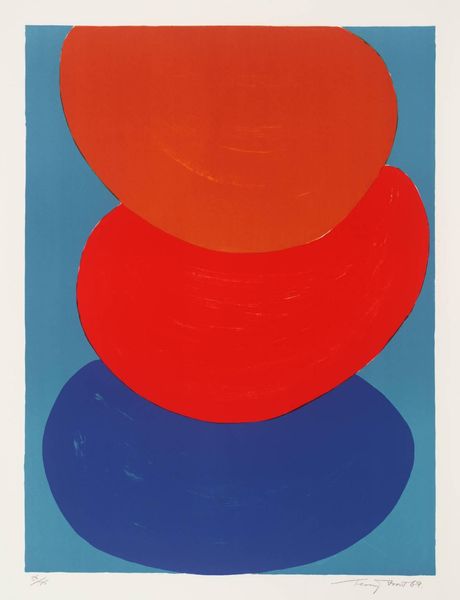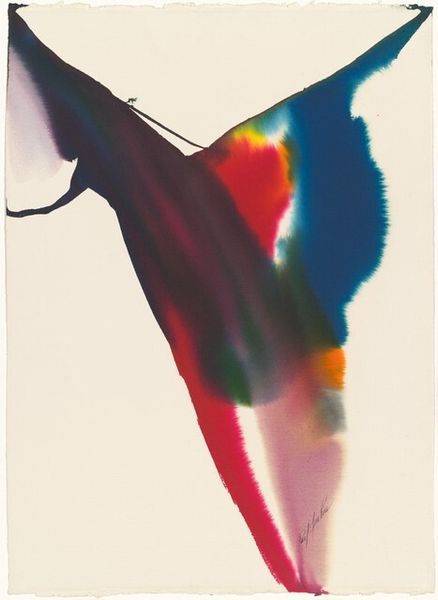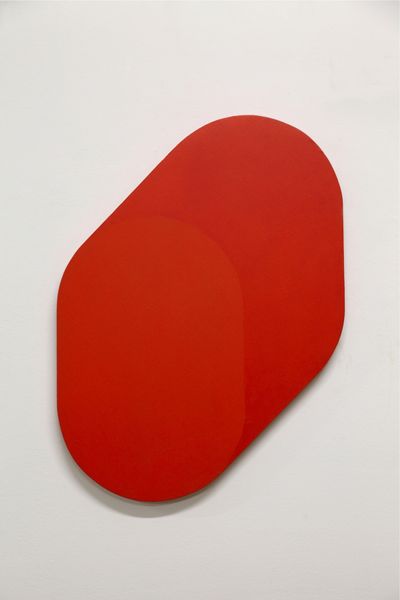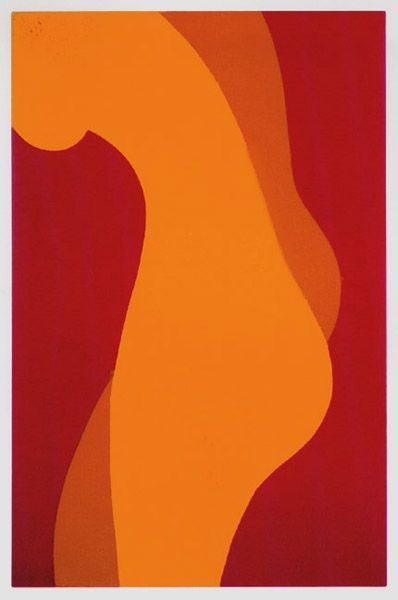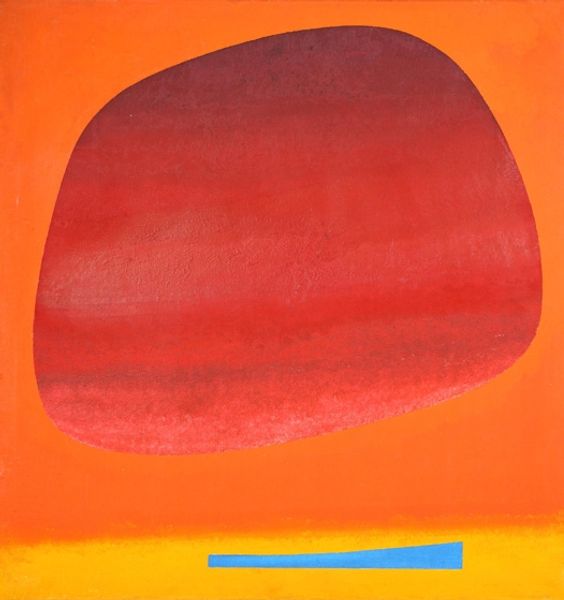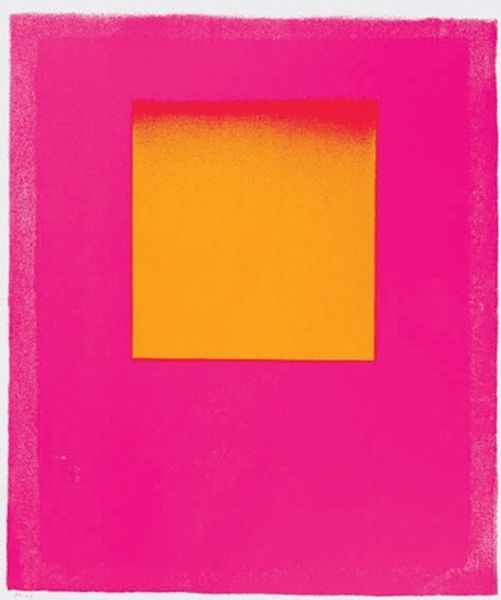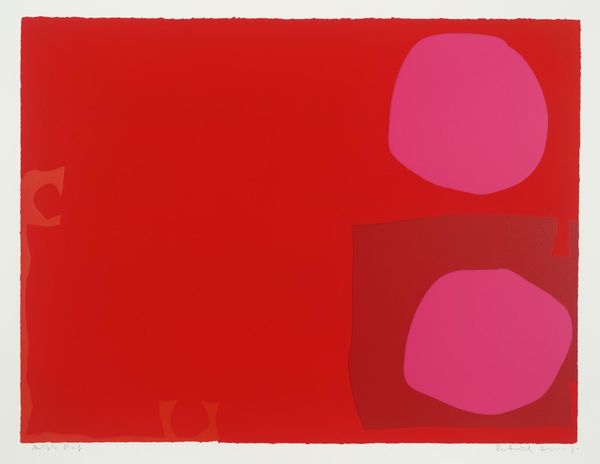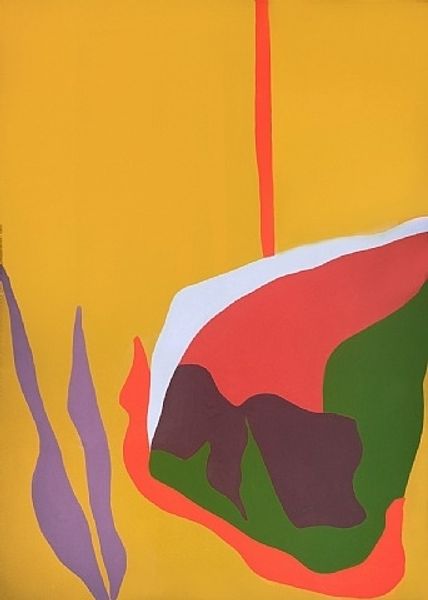
Copyright: Sadamasa Motonaga,Fair Use
Editor: This is Sadamasa Motonaga’s "Piron Piron" from 1975, made using acrylic paint. The blending of colours gives it an airbrushed quality, almost like industrial design. What's your read on this? Curator: For me, the core is how Motonaga uses acrylic, a relatively new industrial material at the time, to mimic natural forms. It bridges the gap between organic and synthetic, highlighting our increasing reliance on manufactured goods even when representing something as basic as a "form". The smoothness conceals the labor, doesn’t it? Editor: It does. So the *process* of making this comments on a bigger shift in society? Curator: Exactly! The slick surface and clean lines, achieved through the deliberate application of a mass-produced paint, speak to a consumer culture obsessed with perfect, easily reproducible objects. It mirrors the post-war boom in Japan, where art and industrial production were closely intertwined. Where do you see consumption echoed here? Editor: Maybe the colour gradient? It’s like a mass-produced sunset. Also, it almost looks inflatable; the plastic-y material feels so smooth. It’s definitely designed to appeal. Curator: Inflatable art *was* having its moment. These visual cues directly link to the culture of the time. Pop Art critiqued and celebrated this, too. Think about the labour it took, too, in blending paints to hide the touch of the artist! Editor: I never thought about the smoothness as hiding labor, but it totally makes sense in the context of the ‘70s and mass production. Curator: Understanding the materials and methods offers an insightful commentary on society. Editor: Definitely. Looking at "Piron Piron" through that lens really changes my perception.
Comments
No comments
Be the first to comment and join the conversation on the ultimate creative platform.
